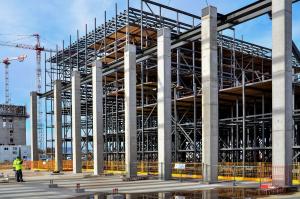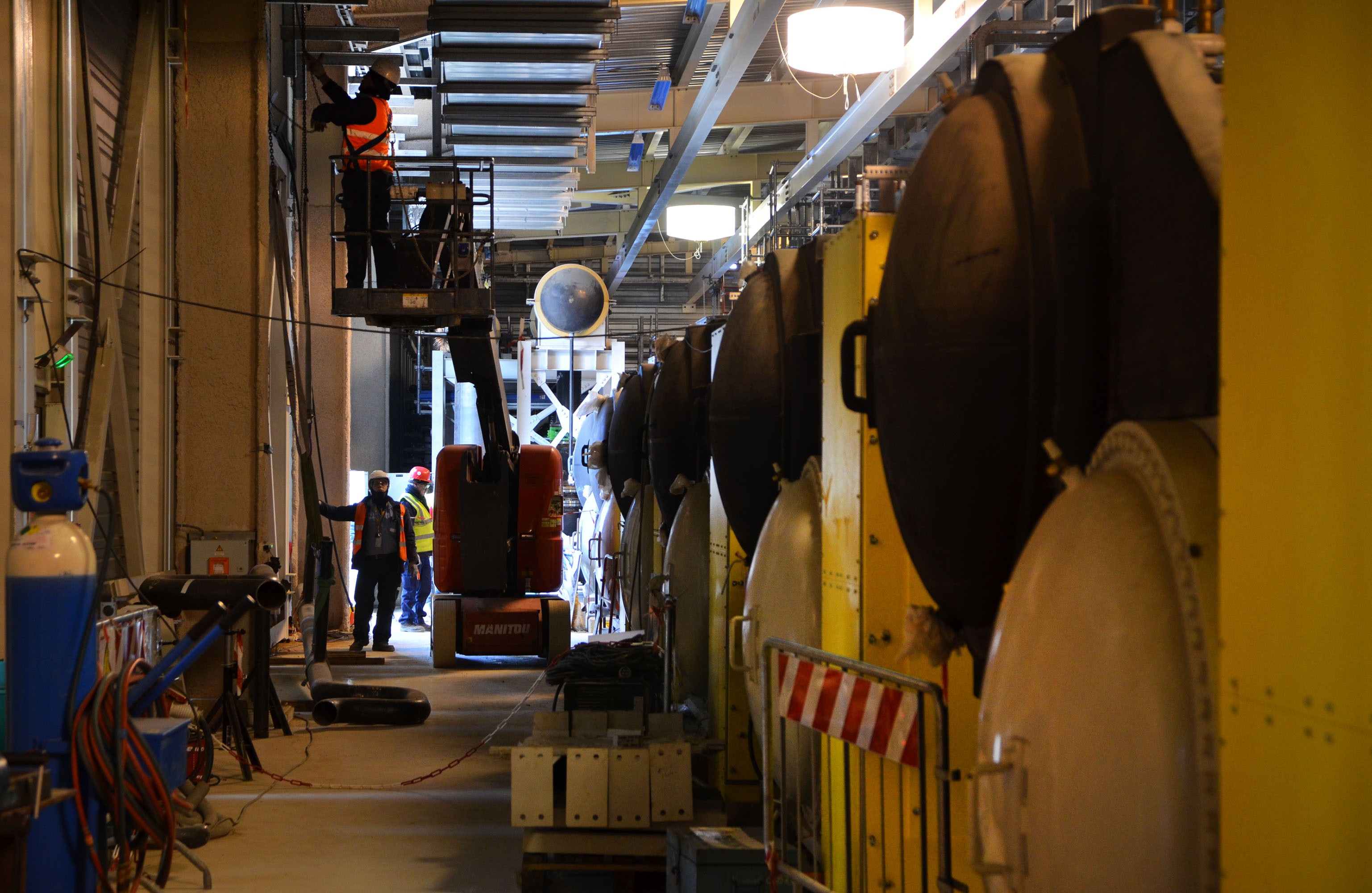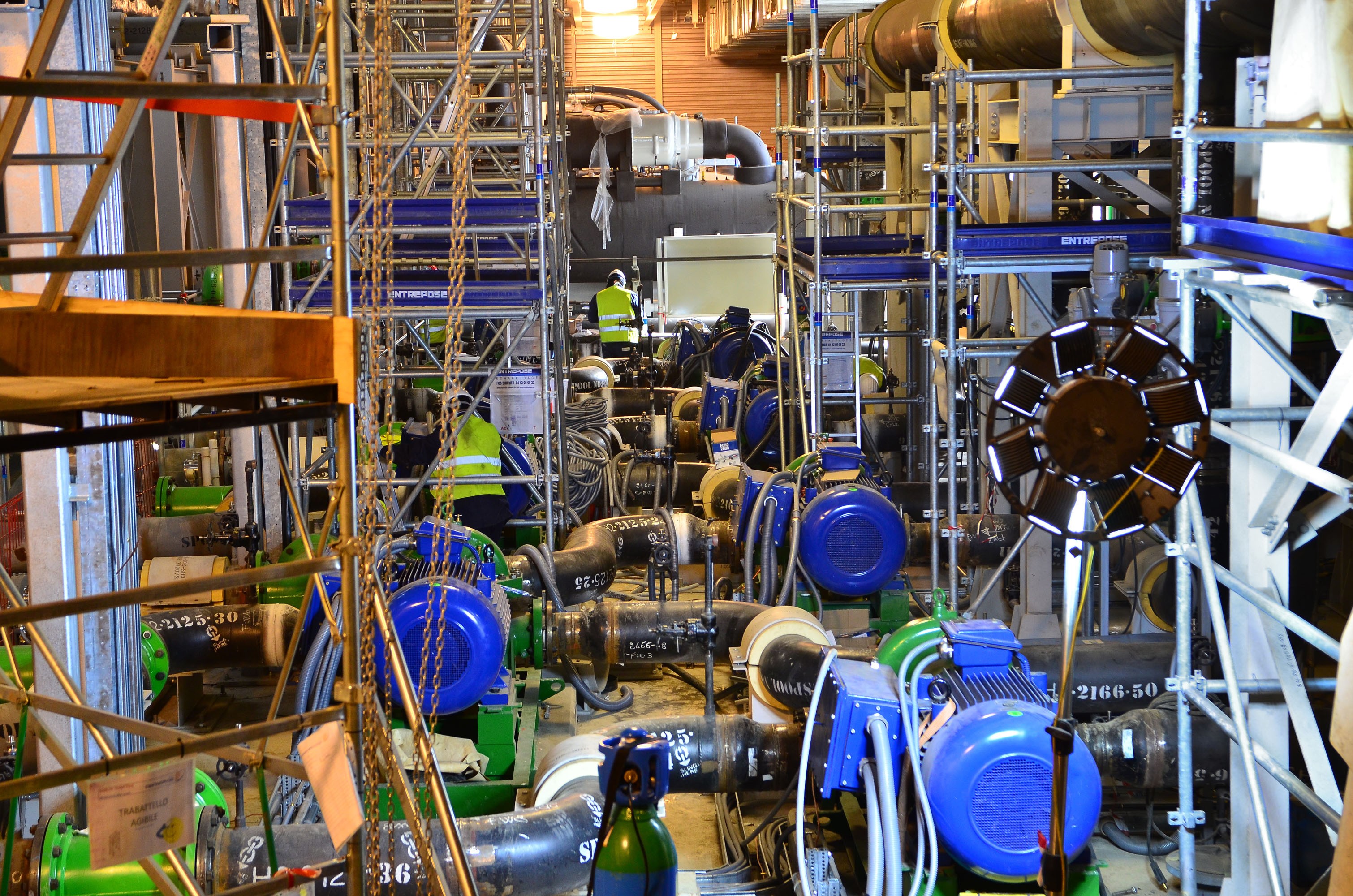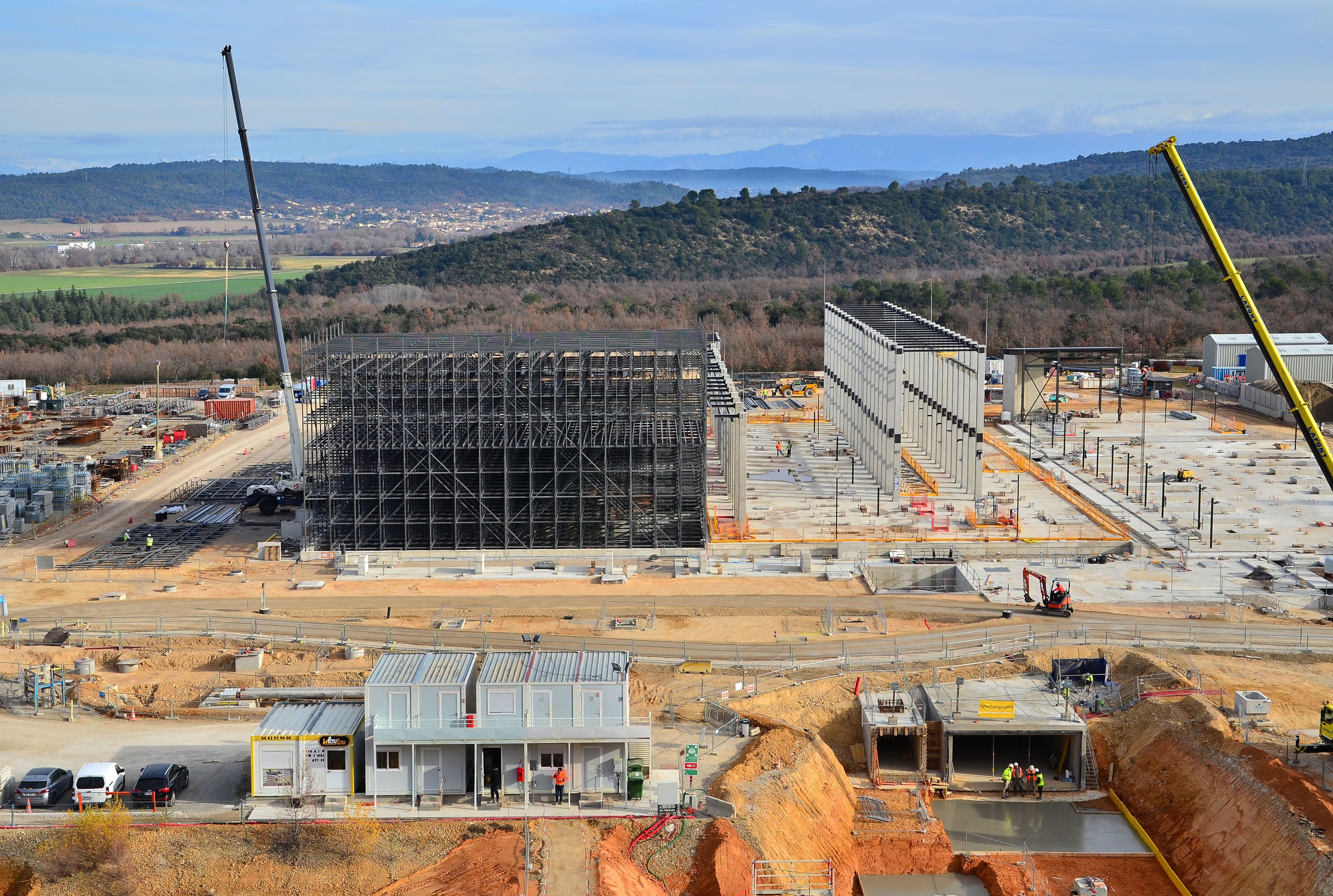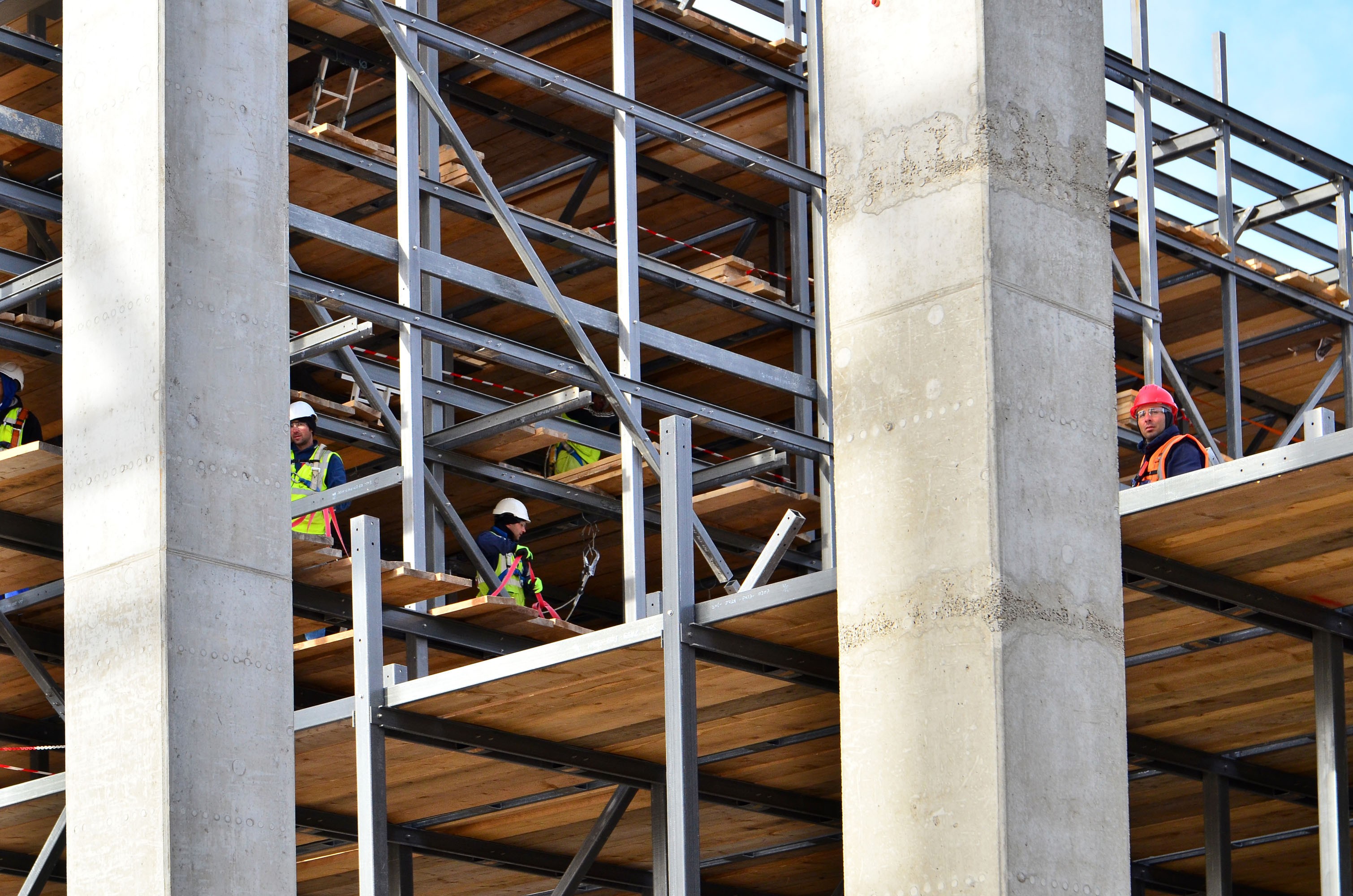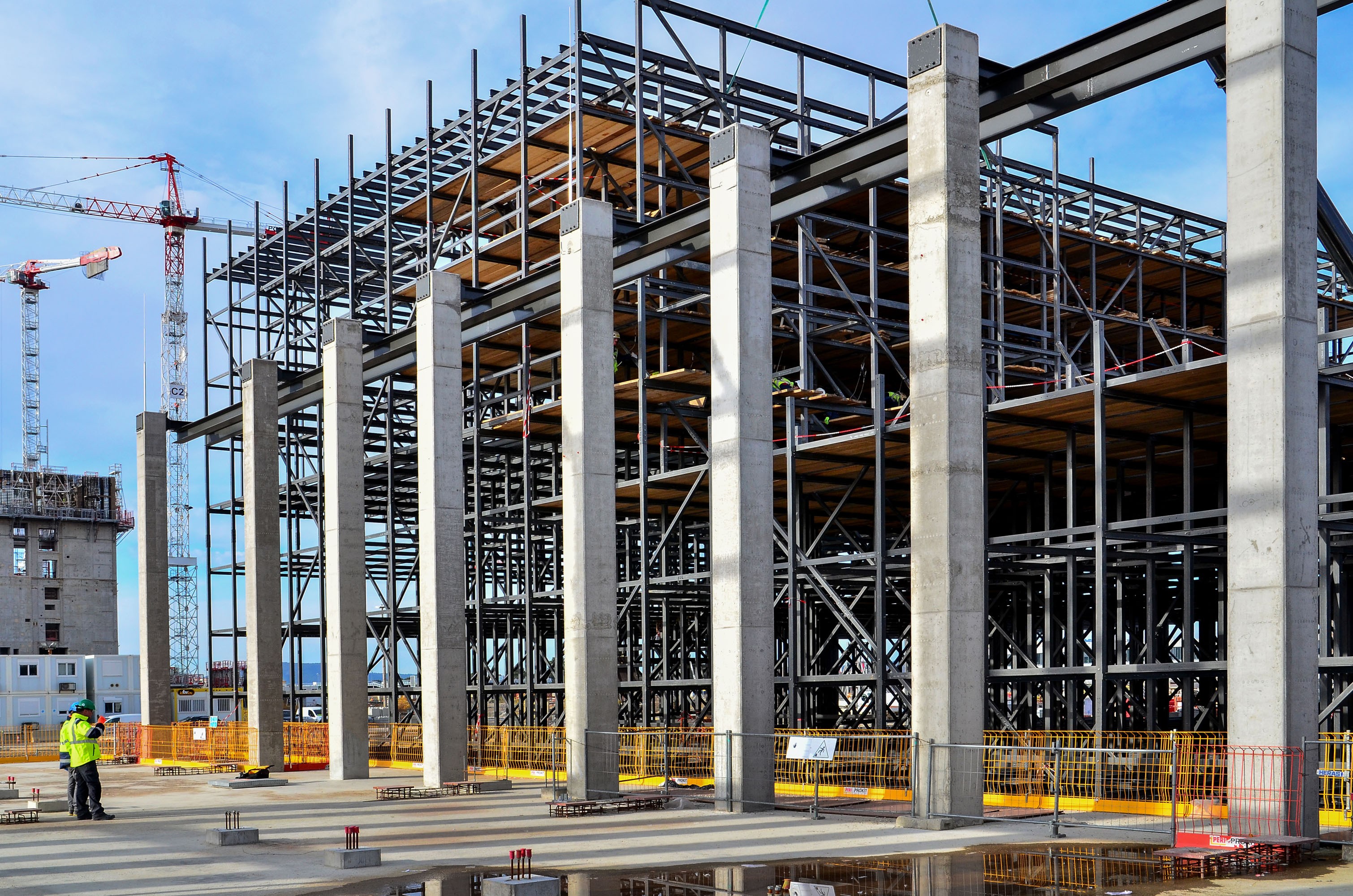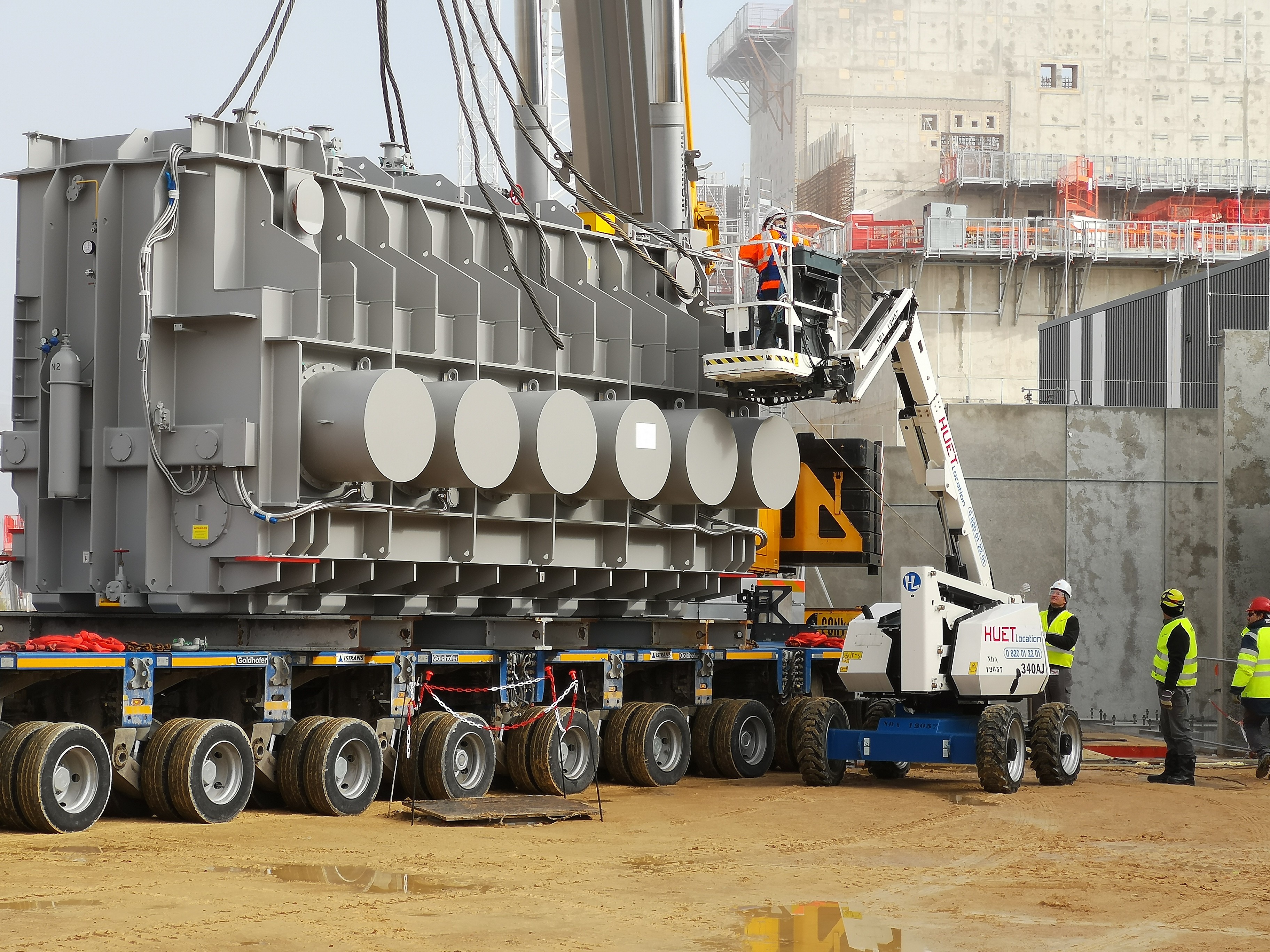Auxiliary buildings
Support for the machine
17 Dec 2018
A tokamak would be a lifeless machine if it was not supported by a significant industrial infrastructure. On the ITER platform close to 40 buildings host the equipment and systems that make burning plasma experiments possible.
One of the newest structures on site has gone up in the heat rejection zone on the north side of the platform. The European Domestic Agency is building the infrastructure, the Indian Domestic Agency is procuring the equipment, and the ITER Organization is overseeing installation works.
A tokamak needs to be fed electrical power in both AC and DC form; it requires powerful heating systems to bring the plasma to the required temperature; the machine's superconducting magnet system demands a constant circulation of cooling fluids; the heat generated on the plasma-facing components must be evacuated by a large water cooling system, complete with kilometres of piping, basins and cooling towers.
See the gallery below to see some of the under-sung areas of the ITER worksite that host critical plant systems.

